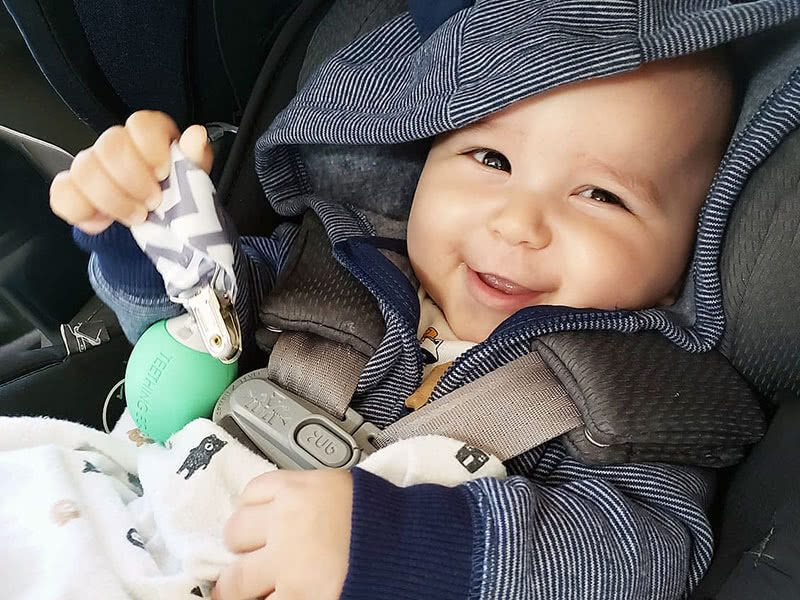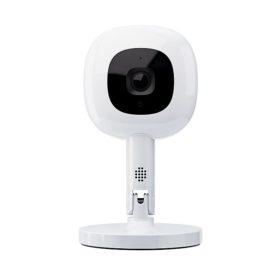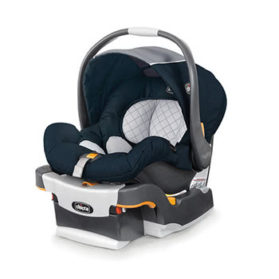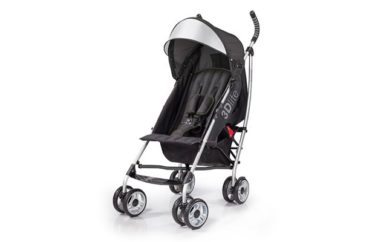Our Infant Car Seat Guide will help you find the best car seat for you and your family by answering such questions as:
How do I choose an infant car seat?
What are the most important infant car seat features?
With so many options, which seat is right for me and my baby?
These are undoubtedly some of the first questions you’ll ask yourself as a new parent or soon parent to be.
Most hospitals will require that you have an infant car seat with you when you’re ready to leave after delivering your baby. This will be the first important journey of your baby. The seat that you choose will most probably stay with you until your child reaches 18 months.
That’s why choosing the right car seat is very important.
Should you get an infant car seat or a convertible seat? What should you pay attention to and which features are unnecessary?
In this baby car seat buying guide, you’ll see everything you need to know to pick the right seat for you and your baby. We’ll start by reviewing the 9 essentials tips to select the car seat that’s right for you before sharing more information on how infant car seats are tested.
By the end of this guide, you’ll know exactly what to look for in a car seat to spend your money wisely.
Ready? Let’s dive in.

How to choose an infant car seat: 9 important things to look for
From safety to maintenance to price, here are the 9 most important things to keep in mind when buying an infant car seat. We’ll start with the most important first.

1. Safety: Is the car seat safe and legal in your country?
The first and most important thing to keep in mind is, of course, safety. You buy a car seat to keep your child safe and secure while driving so you need to be able to trust that it will do its job.
In most countries, there are national organizations in charge of testing and evaluating car seat safety. In the U.S., that’s the role of the National Highway Traffic Safety Administration. The NHTSA sets rules and regulations for road safety with the Federal Motor Vehicle Safety Standard (FMVSS). The NHTSA will also crash test every infant car seat and assign them a safety score before allowing them to be sold in the U.S.
As a result, every new car seat sold in the U.S. has a safety rating and meets minimum road safety standards.

The American Academy of Pediatrics (AAP) is another helpful source to learn about car seat safety. The AAP recommends that infants and toddlers should ride in a rear-facing seat for as long as possible.
“Fortunately, car seat manufacturers have created seats that allow children to remain rear-facing until they weigh 40 pounds or more, which means most children can remain rear-facing past their second birthday. It’s best to keep your child rear-facing as long as possible. This is still the safest way for children to ride.”
Dr. Benjamin Hoffman, lead author of the AAP policy statement and chair of the AAP council on injury, violence and poison prevention.
When reviewing car seats for Baby Gear Essentials, we always use the NHTSA crash test scores as part of our overall rating. The best performing car seats in terms of safety in our tests are the Chicco KeyFit 30 and the UPPAbaby MESA.
Helpful Note
Did you know that infant car seats have an expiration date? Because materials stretch and deteriorate over time, most car seats will expire within five to seven years. Always check the expiration date of a car seat before purchasing.
2. Size: Is the car seat appropriate for your baby height and weight?
The second most important thing to keep in mind when choosing an infant car seat is the height and weight limit. This is especially important if your baby is premature or below 6.5 lbs at birth. You need to make sure that the seat comes with a newborn insert to keep your baby snug and tight.
A car seat of the right size is essential to keep your baby secure. The Center for Disease Control and Preventions (CDC) estimates that the risk of dying in a car accident goes down by 71% for children who are properly secured in a car seat (source).

Infant car seat vs convertible seat, which is best?
When buying a car seat for a newborn, you have the option to choose between an infant car seat and a convertible baby seat. Those are two very different models that come with their advantages and disadvantages.
Infant car seat
- Specifically designed to be safer and more comfortable for newborns and infants.
- Can be detached from your car and easily transported, often in conjunction with a stroller.
- Will only last for about 18 months.
Convertible car seat
- The seat will grow with your child.
- You only need to buy one seat.
- Bulky and not portable.
Overall, we have a strong preference for infant car seats over convertibles. While it’s true that a convertible seat means that you only need to purchase one seat, it comes at the cost of being less practical and comfortable for you and your baby. An infant car seat, on the other hand, can easily be moved from your car to your stroller and carried by hand (check our guide on car seats and strollers compatibility).
You and your baby will need to go for regular pediatrician visits in the first few months, so not having to take your child out of the seat and risk waking them up every time you move is a significant advantage.

Infant car seats are just more suitable for infants, especially premature babies. They were designed specifically with them in mind.
Aren’t convertible seats cheaper over time? If you add up the price of an infant car seat with the price of a toddler car seat, the total will probably be higher than the price of a convertible seat. But, many parents don’t keep their convertible seat for more than 2 years and end up buying another seat. Children’s car seats get dirty quickly and don’t age well. In addition, safety regulations regularly change as new models are being released.
You’ll probably be happy to change your car seat after 18 months of regular use. Trust us! You’ll be better of purchasing two car seats at a lower price over two years versus spending a larger amount for a convertible initially.
That said, there are many excellent convertible seats available today. Here’s a list of the best-sellers on Amazon.
3. Comfort: Is your baby comfortable enough to sleep in the seat?
There is nothing worse than having a baby crying at the back of your car for an entire journey. If your child isn’t comfortable in their seat, they will cry!
The two most important things for comfort in an infant car seat are extra padding and material breath-ability. The UPPAbaby MESA is one of the best car seats in that category thanks to its soft, lightweight and breathable natural Merino wool fabric.

4. Installation: How easy is it to install the seat?
You’ll be regularly taking your baby’s seat in and out of your car, so ease of installation is a critical factor to take into account when choosing a seat. It starts by making sure that the seat will fit your car in the first place. Some extra-large infant car seats might not fit in a smaller car. If you’re unsure, measure the space available at the back of your car before looking at the dimensions of each seat in our ranking of the best infant car seats available today.
Most infant car seats now come with a dedicated installation base. You can install the base once in your car and just clip the seat in and out when needed. Every car seat base has the option to connect with Lower Anchors and Tethers for Children (LATCH) to make the installation easier.
Helpful Note
46% of child seats and boosters are installed incorrectly. A poorly installed seat leaves a child vulnerable in a crash. Read our guide to see how to securely install your baby in a car seat.

5. Compatibility: Does it work with your stroller?
If you already have a stroller, you’ll need to make sure that your car seat is compatible with it. Stroller compatibility will enable you to easily take the seat out of the car and clip it to your stroller to get going.
Finding the perfect match between a stroller and a car seat can be very tricky, and is one of the most time-consuming tasks that new parents have to go through. And it’s an important one, as you’ll be using both your stroller and your car seat regularly.
Some car seats are compatible as-is with specific strollers, while others will require an adapter or not be compatible at all. You can find the best combo for your lifestyle with our in-depth compatibility guide on strollers and car seats.

6. Maintenance: Is it easy to wash and maintain?
One thing is certain, your car seat will get dirty quickly and often. So you want a seat that’s easy to wash and maintain. The seat cover, in particular, should be easily removable and machine washable.
We include the easiness to wash and maintain a seat in our rating of the best infant car seats and dedicate a section to it in our reviews because it’s too often overlooked by parents when choosing a seat but quickly becomes a pain when the first stain appears.

7. Portability: How portable is it?
The weight of a car seat shouldn’t be a deciding factor in your selection but it’s something worth keeping in mind nevertheless. Some car seats are significantly heavier than others. And some car seats also have a terrible design with a handlebar that blocks the seat canopy.
If you expect carry your seat by hand often, check the portability score in our reviews to see how your favorite model performs.

8. Features: Does it have the features that are most helpful to you?
You might be surprised to see some of the features that infant car seats come with. Some features are essential, while others are nice to have. And then some are just fancy marketing buzzwords to make you spend more.
Here are the features we think are really important to have in an infant car seat:
- 5-point harness: Most recent infant car seats will have this. It means two shoulder straps (one on each side), two waist straps (one on each side) and one strap between the legs that meet in the middle.
- Cushion side-impact protection: This is for both safety and comfort. You want to have extra foam or air pads at the side of your baby’s head.
- Car seat base: Most infant car seats now come with an installation base that you can leave in your car. You can also purchase extra bases if you have more than one car. It makes the installation and transportation much easier and more secure.
- Compatibility with the LATCH system: This will greatly facilitate the proper installation of the seat or its base in your car without having to use the cumbersome seatbelts.
- Anti-rebound bar: This is purely just for safety. An anti-rebound bar prevents the seat from bouncing up and down in case of an accident.
- Breathable fabric: This is especially important if you live in warm weather or spend a lot of time in your car. If you want your baby to be comfortable in their seat, the fabric should be light and breathable to keep your baby’s body temperature just right.
- Non-rethreading straps: You won’t need to adjust the straps often but when you do, you’ll appreciate being able to do it without having to take your baby out of the seat. A non-rethreading strap means that you can easily adjust the straps shoulder height with your baby sitting in the seat.

9. Price: How much should you spend on a car seat?
Wondering how much a baby car seat is going to cost you? Typical prices range from $100 for entry-level models to $300 for more premium models. In general, the more you spend the more features and quality materials you may get.
Regardless of how much you spend, every car seat sold in the United States meets the minimum safety standards. So why are some models nearly three times more expensive than the cheapest car seat? It all comes down to features, materials and finishing.
The Graco SnugRide Click Connect 35, for example, is one of the cheapest models available on the market today (check price). It will keep your baby safe in the car but we wouldn’t recommend it for extended use as your child won’t be comfortable in it.
The UPPAbaby MESA, on the other hand, is more expensive (check price) but comes with a naturally breathable fabric and plenty of extra cushion to help your baby fall asleep while being in the seat.
To decide how much you should spend on your seat, we recommend that you think about how you’ll be using it. The more time your baby will have to spend in the seat, the more money you should spend to make it a pleasant journey for everyone in the car.
Helpful Note
Should you save money by buying a second-hand car seat? The American Academy of Pediatrics recommends that you don’t unless you know the history of the used car seat. A car seat that was poorly maintained or involved in an accident might be damaged. And a damaged car seat won’t be able to keep your baby safe. In addition, infant car seats expire after a few years, so always check the expiration date of a used car seat to ensure that it’s still valid.
The National Highway Traffic Safety Administration created a handy little video to sum it all up:
How to buy an infant car seat? Online versus In-store
When it comes to buying your car seat, you can go to a store or look for your preferred model online. While we like to see and touch new seats to make our decision, we often find that there are a lot more options available online and for a better price.
If you live near a store that has a good range of options, go there and see the seats for yourself. Note down the prices for your preferred brands and compare them online.
If you don’t have such a store near you, take a look at our in-depth car seat reviews. We test each seat that we review with our own kids for several months before writing down our thoughts. That way, you can get practical and real-life feedback from parents like you. We also include detailed scores for each of the essentials aspects to keep in mind when choosing your car seat.
Whatever you do, make sure to buy from a trusted store with clear and convenient return policies, to avoid unpleasant surprises.

Frequently Asked Questions
Which side of the car is safest for a child seat?
According to both the National Highway Traffic Safety Administration (NHTSA) and the American Academy of Pediatrics (AAP), the middle seat is the safest place to install your baby’s car seat. The NHTSA also recommends that all children under the age of 13 ride in the back, ideally in the center. (source)
What is the best car seat for a newborn?
It depends on your needs and budget, but our overall best newborn car seat of the year is the Chicco KeyFit 30. It’s the best value for money and comes with one of the easiest installation bases.
When should I change my baby’s car seat?
You should change your baby’s car seat once your child reaches the height or weight limit of the seat or if the seat has been damaged or has expired.
What is a convertible car seat?
A convertible car seat is a seat that can be used for both infants and toddlers. You can adjust the seat as your child grows. Here are the best-sellers on Amazon.
Do all car seats fit in strollers?
No. Most car seats will fit in a stroller of the same brand. Infant car seats from the most well-known brands can also fit strollers from other brands by using an adapter. We’ve written an entire guide to help you find the best car seat and stroller combination.
What is the best time to buy a car seat?
You should ideally buy your car seat at least a month before your baby is due. Don’t wait for the last minute to go pick your car seat, you’ll have other things on your mind. You’ll need the seat to leave the hospital, so buy one well in advance.
Can I buy a used car seat?
We don’t recommend buying a used car seat as it might have expired or been damaged. You should avoid buying a second-hand seat if you don’t know how it was used or trust its seller. The American Academy of Pediatrics recommends, in particular, to avoid buying a used car seat if:
- It has an unknown history.
- It has been involved in an accident.
- It is too old – look for the expiration date on the seat’s plastic parts, generally on the bottom of the seat. If there’s no expiration date, contact the seat’s manufacturer to find out when it expires.
- It has visible cracks.
- It lacks a label with the model number and date of manufacture so that you can check for recalls.
- It was recalled – contact the manufacturer, the NHTSA Vehicle Safety Hotline at 888-327-4236 or check the NHTSA’s child seat recall list to find out.
- It does not come with instructions that explain how to use the seat (unless they are easily available online).
- It is missing parts (source).
Further reading recommendations about infant car seats
We used several authoritative sources to help us write this guide. We recommend that you read them if you want to learn more about car seat safety in general. These are also great resources if you want to understand a particular aspect of child safety or want to stay up-to-date with the latest research.
The National Highway Traffic Safety Administration and the National Child Passenger Safety Board have excellent in-depth resources on car safety for children. We recommend you start there:
If you want to explore car safety even further, we recommend the following resources that were used when writing this article:
- How to keep your child safe in a car by WebMD
- How to use the correct car seat for your child by the Center for Disease Control and Preventions
- www.safekids.org
- www.nsc.org
Images by Chicco, Maxi-Cosi, UPPAbaby, N. Bertrand and Baby Gear Essentials.

Samantha is a busy mother of four, who loves finding the best products to help in raising children. She graduated from BYU in Marriage and Family Studies. When she isn’t writing or testing new products, you can find her playing board games with her kids and teaching them creative strategies.







